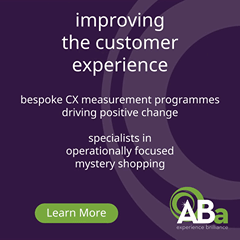Unified Endpoint Management (UEM) – an essential strategy for retailers
Adopting Unified Endpoint Management (UEM) is now an essential strategy for all retailers to support the efficient and secure running of disparately located – and increasingly mobile – devices.
Retailers are now running their mission critical point of sale solutions – and other business critical functions – on mobile devices. Gone are the simple, easily located, fixed and secure devices. UEM’s capacity to amalgamate different device management technologies into one makes it easier to connect endpoints, such as network devices, desktops, servers, and mobile devices.
Yet UEM has still more to offer beyond straightforward system monitoring and support.
70% reduction in issues reported with self-healing
With access to highly specialised retail technology experts, you can embed powerful self-healing into your UEM solutions to deliver impressive time and cost savings. Automatic detection of problem areas and pain points are then targeted with self-healing procedures without impacting operations to ensure your retail shops don’t have down-time. So you can continue serving your customers and improve colleague experience.
This ability to quickly pinpoint issues and deliver swift resolutions has been a transformative area for many of PMC’s retail clients, with one seeing an impressive 70% reduction in the number of ‘error tickets’ generated by employees.
How device visibility impacts strategic change
Improved device visibility through UEM provides retailers with rich data on their devices.
This overcomes a perennial problem for IT teams who find it difficult to even keep track of devices across their dispersed estates. They can now receive reports and benefit from auditing capability, which reveals data such as memory availability on each device, and space on hard discs. Dashboards and daily ‘health boards’ developed by service providers, give IT and Retail Directors the confidence that staff will not incur issues and their estate is in good health.
UEM provides evidence of where specific problems have been occurring and the health of individual devices. This health status also helps identify any problems with specific hardware, for example the need for a software patch. The roll-out of patches, and ensuring they remain secure, can all be handled via UEM.
This is particularly valuable data to underpin rapid (agile) deployments to change and update software in support of strategic initiatives.
UEM is valuable for new deployments as well as managing change. UEM is eliminating the manual and labour-intensive processes associated with device deployment. New devices can now be rolled out remotely at the mere press of a button. The positive commercial impact of this new approach is heightened by the ability to run the whole process out of trading hours and without the presence of individuals on the shop floor.
UEM makes it possible to streamline operations processes, so retailers can be more agile and better able to adapt to rapidly changing business needs.
Typically, this might be a digital transformation programme, requiring the proliferation of connected devices across retail businesses including mobile tools such as tablets, printers, footfall measuring devices, eye trackers, digital signage, and myriad other IoT devices.
This growing family of digital tools all need supporting – and UEM provides the ideal solution. But maximum value is only leveraged from UEM when it forms part of a managed solution provided by a team with a deep understanding of retail, who can intelligently navigate the complexities of retail processes and systems.
About the author:
Jon Ellis works within PMC’s Managed Service division supporting and advising retail customers on the best application and deployment services to meet their IT needs. His impressive domain knowledge stems from a 20-year career in DBA, and enables him to support projects from installation, through implementation to go live.














